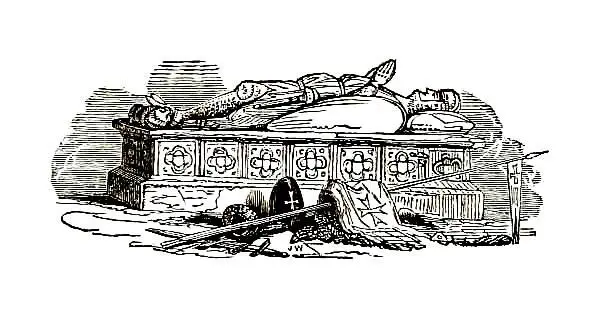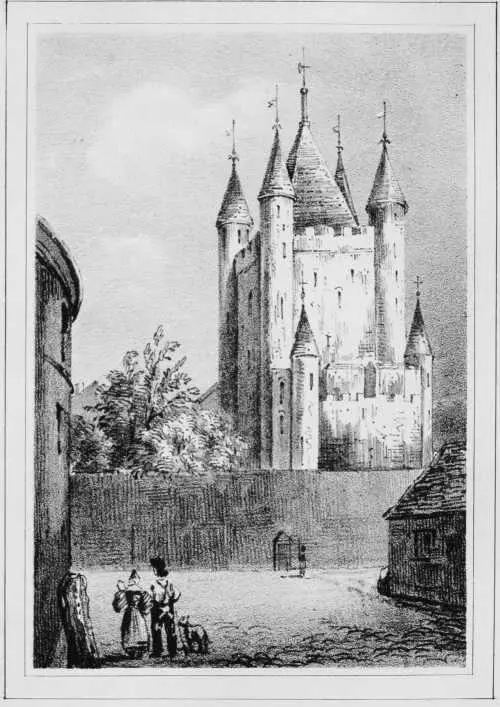James Burnes - Sketch of the History of the Knights Templars
Здесь есть возможность читать онлайн «James Burnes - Sketch of the History of the Knights Templars» — ознакомительный отрывок электронной книги совершенно бесплатно, а после прочтения отрывка купить полную версию. В некоторых случаях можно слушать аудио, скачать через торрент в формате fb2 и присутствует краткое содержание. Жанр: foreign_antique, foreign_prose, Историческая проза, на английском языке. Описание произведения, (предисловие) а так же отзывы посетителей доступны на портале библиотеки ЛибКат.
- Название:Sketch of the History of the Knights Templars
- Автор:
- Жанр:
- Год:неизвестен
- ISBN:нет данных
- Рейтинг книги:4 / 5. Голосов: 1
-
Избранное:Добавить в избранное
- Отзывы:
-
Ваша оценка:
- 80
- 1
- 2
- 3
- 4
- 5
Sketch of the History of the Knights Templars: краткое содержание, описание и аннотация
Предлагаем к чтению аннотацию, описание, краткое содержание или предисловие (зависит от того, что написал сам автор книги «Sketch of the History of the Knights Templars»). Если вы не нашли необходимую информацию о книге — напишите в комментариях, мы постараемся отыскать её.
Sketch of the History of the Knights Templars — читать онлайн ознакомительный отрывок
Ниже представлен текст книги, разбитый по страницам. Система сохранения места последней прочитанной страницы, позволяет с удобством читать онлайн бесплатно книгу «Sketch of the History of the Knights Templars», без необходимости каждый раз заново искать на чём Вы остановились. Поставьте закладку, и сможете в любой момент перейти на страницу, на которой закончили чтение.
Интервал:
Закладка:
PERSECUTION OF THE TEMPLARS

CHAP. III.
The Persecution of The Templars
When Acre fell in 1292, the Templars, having lost all their possessions and a great number of their members in the Holy Land, retired with the other Christians to Cyprus. Having probably seen the folly of all hope of recovering the Holy Land, they grew indifferent about it; few members joined them from Europe, and it is more than probable that they meditated a removal of the chief seat of the Order to France. 15 15 This seems somewhat countenanced by the great additions made to the buildings of the Temple at Paris previous to the arrival of the Grand Master. In 1306, was erected a large square tower, flanked by four round towers, with an adjacent building on the north side, surmounted by turrets. The principal tower contained four stories, in each of which there was an apartment thirty feet square: three of the inferior towers had also each a hall. The remaining tower contained a fine staircase, which conducted to the different chambers and battlements. The walls of the central keep were nine feet in thickness. This Tower of the Temple has been rendered memorable in modern times by the captivity of the unfortunate Louis XVI. and his family. It is also noted as the place of imprisonment, by Buonaparte, of the celebrated Sir Sidney Smith, now the Head of the Order of the Temple.
The Hospitallers, on the other hand, with more prudence, as events showed, resolved to continue the war against the infidels, and they attacked and conquered Rhodes; while the Teutonic knights transferred the sphere of their pious warfare to Prussia against its heathen inhabitants. Thus, while the Templars were falling under the reproach of being luxurious Knights, their rivals rose in consideration, and there was an active and inveterate enemy ready to take advantage of their ill-repute.
Philip the Fair, a tyrannical and rapacious prince, was at that time on the throne of France. His darling object was to set the power of the monarchy above that of the church. In his celebrated controversy with Pope Boniface, the Templars had been on the side of the Holy See. Philip, whose animosity pursued Boniface even beyond the grave, wished to be revenged on all who had taken his side; moreover, the immense wealth of the Templars, which he reckoned on making his own if he could destroy them, strongly attracted the king, who had already tasted of the sweets of the spoliation of the Lombards and the Jews; and he probably, also, feared the obstacle to the perfect establishment of despotism which might be offered by a numerous, noble, and wealthy society, such as the Templars formed. Boniface's successor, Clement V. was the creature of Philip, to whom he owed his dignity, and at his accession had bound himself to the performance of six articles in favour of Philip, one of which was not expressed. It was probably inserted without any definite object, and intended to serve the interest of the French monarch on any occasion which might present itself.

LA TOUR DU TEMPLE À PARIS
It had been the object of Pope Boniface to form the three Military Orders into one, and he had summoned them to Rome for that purpose, but his death prevented it. Clement, on this, June 6, 1306, addressed the Grand Masters of the Templars and the Hospitallers, inviting them to come to consult with him about the best mode of supporting the Kings of Armenia and Cyprus. He desired them to come as secretly as possible, and with a very small train, as they would find abundance of their Knights this side the sea; and he directed them to provide for the defence of Limisso in Cyprus during their short absence. Fortunately perhaps for himself and his Order, the Master of the Hospitallers was then engaged in the conquest of Rhodes, but Jacques de Molay, 16 16 Jacques de Molay was elected Grand Master in the year 1297, and was the second elevated to that dignity after the expulsion of the Christians from the Holy Land. He was of an ancient family in Besançon, Franche Compté, and entered the Order in the year 1265.
the Master of the Templars, immediately prepared to obey the mandate of the Pope, and he left Cyprus with a train of 60 Knights, and a treasure of 150,000 florins of gold, and a great quantity of silver money, the whole requiring twelve horses to carry it. 17 17 It is probable that part of this treasure was formed from the spoils of Greece, which the Templars had been invited from their retirement to invade, at the instigation of the King of Sicily. After overrunning great part of that country, they returned loaded with the plunder of its cities, leaving their possession to some allies. — Vide Michaud , Histoire des Croisades .
He proceeded to Paris, where he was received with the greatest honours by the King, and he deposited his treasure in the Temple of that city. It is, as we have said, not impossible that it was the intention of Molay to transfer the chief seat of the Order thither, and that he had, therefore, brought with him its treasure and the greater part of the members of the chapter; and indeed it is difficult to say how early the project of attacking the Templars entered into the minds of Philip and his obsequious lawyers, or whether he originally aimed at more than mulcting them under the pretext of reformation: and farther, whether the first informers against them were suborned or not. The records leave a considerable degree of obscurity on the whole matter. All we can learn is, that a man named Squin de Flexian, who had been a Prior of the Templars, and had been expelled the Order for heresy and various vices, was lying in prison at Paris or Toulouse, it is uncertain which. In the prison with him was a Florentine named Noffo Dei, "a man," says Villani, "full of all iniquity." These two began to plan how they might extricate themselves from the confinement to which they seemed perpetually doomed. The example of the process against the memory of Pope Boniface, shewed them that no lie was too gross or absurd not to obtain ready credence, and they fixed on the Templars as the objects of their charges. Squin told the governor of the prison that he had a communication to make to the King, which would be of more value to him than if he had gained a kingdom, but that he would only tell it to the King in person. He was brought to Philip, who promised him his life, and he made his confession, on which the King immediately arrested some of the Templars, who are said to have confirmed the truth of Squin's assertions. Shortly afterwards, it is said, similar discoveries were made to the Pope by his chamberlain, Cardinal Cantilupo, who had been in connexion with the Templars from his eleventh year.
Squin Flexian declared, 1.That every member on admission into the Order swore on all occasions to defend its interests right or wrong; 2.That the heads of the Order were in secret confederacy with the Saracens, had more of Mahommedan unbelief than of Christian faith, as was proved by the mode of reception into the Order, when the novice was made to spit and trample on the crucifix, and blaspheme the faith of Christ; 3.That the superiors were sacrilegious, cruel, and heretical murderers; for if any novice, disgusted with its profligacy, wished to quit the Order, they secretly murdered him, and buried him by night; so, also, when women were pregnant by them, they taught them how to produce abortion, or secretly put the infants to death; 4.The Templars were addicted to the error of the Fraticelli, and, like them, despised the authority of the Pope and the Church; 5.That the superiors were addicted to the practice of horrible crimes, and if any one opposed them, they were condemned by the Master to perpetual imprisonment; 6.That their houses were the abode of every vice and iniquity; 7.That they endeavoured to put the Holy Land into the hands of the Saracens, whom they favoured more than the Christians. Three other articles of less importance completed this first body of charges. It is remarkable, that we do not find among them those which made such a figure in the subsequent examinations; namely, the devil appearing among them in the shape of a cat; their idolatrous worship of an image with one or three heads, or a skull covered with human skin, with carbuncles for eyes, before which they burned the bodies of their dead brethren, and then mingled the ashes with their drink, thereby thinking to gain more courage; and, finally, their smearing this idol with human fat. 18 18 A French writer gives the following opinion regarding the origin of some of these charges: – "Les Chevaliers supportaient un grand nombre d'épreuves religieuses et morales avant de parvenir aux divers degrés d'initiation; ainsi, par exemple, le récipiendaire pouvait recevoir l'injonction, sous peine de mort, de fouler aux pieds le crucifix, ou d'adorer une idole; mais, s'il cédait à la terreur qu'on cherchait à lui inspirer, il était déclaré indigne d'être admis aux grades élevés de l'Ordre. On conçoit, d'après cela, comment des êtres, trop faibles ou trop immoraux pour supporter les épreuves d'initiation, ont pu accuser les Templiers de se livrer a des practiques et d'avoir des croyances infâmes, superstitieuses." – (Recherches Historiques sur Les Templiers. Paris, 1835.)
Интервал:
Закладка:
Похожие книги на «Sketch of the History of the Knights Templars»
Представляем Вашему вниманию похожие книги на «Sketch of the History of the Knights Templars» списком для выбора. Мы отобрали схожую по названию и смыслу литературу в надежде предоставить читателям больше вариантов отыскать новые, интересные, ещё непрочитанные произведения.
Обсуждение, отзывы о книге «Sketch of the History of the Knights Templars» и просто собственные мнения читателей. Оставьте ваши комментарии, напишите, что Вы думаете о произведении, его смысле или главных героях. Укажите что конкретно понравилось, а что нет, и почему Вы так считаете.












